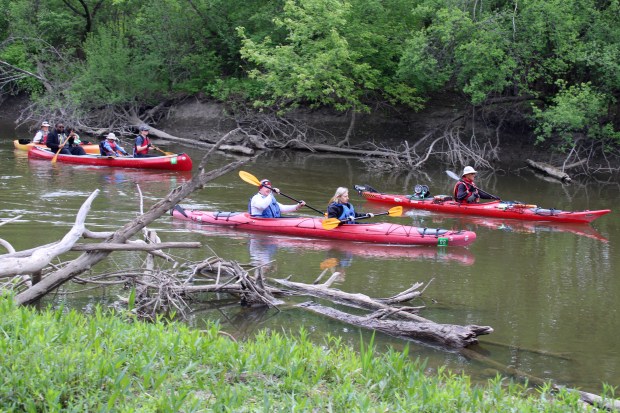Indian Prairie School District 204 is planning to spend around $40 million on building and maintenance projects over the summer in 2025 if voters in the November general election approve the sale of up to $420 million in bonds.
District officials have previously said that the bond issue would go to fund critical safety and infrastructure needs but would not result in a net tax increase, as the 37-cent property tax to pay off the bonds would replace a tax of the same rate set to expire in 2026.
If voters do not approve the bond proposal, the district would instead scale back efforts and focus only on the district’s highest priority needs over summer 2025, bringing the cost down to only $10 million, according to a presentation given by District 204 Chief Business Officer Matt Shipley to the Indian Prairie Board of Education at a meeting on Monday.
He said that $10 million is basically all of the money left in the district’s capital projects fund, which does not currently have a dedicated source of regular funding.
Without another source of revenue, future capital projects such as building maintenance would need to come out of the operating budget, which could take away from the funds used to pay teachers and support educational programs, Shipley has said at past meetings.
According to his presentation on Monday, the district is planning to spend about $10 million just on safety and security improvements if the bond issue is approved by voters in November.
Most of those funds would help the district start installing secure entryways to schools across the district, Shipley said. At previous meetings, he said these “secure vestibules” would ensure that every school has a single and secure entryway where visitors must first interact with the main office before they can get into the school.
Those funds would also help accelerate an existing maintenance program that looks to replace exterior doors and their locks with more secure options, according to Shipley’s presentation on Monday.
If the bond issue is not approved, the door and lock program will still be funded but the secure vestibules will not be constructed, Shipley said.
Infrastructure projects would get $8.8 million in funding if voters approve the bond issue, Shipley’s presentation said.
Most of those funds would go toward flooring replacement projects, particularly in elementary schools, with a goal of replacing flooring in all elementary schools by the end of summer 2026, he said.
The rest of the funds would go toward asphalt and paving improvements along with roof replacements, according to Shipley.
He said that, without the bond issue, infrastructure projects would be scaled back and only receive $3.5 million in funding.
The district is also planning to use bond funds, if voters approve, on $1.7 million in learning environment improvements, Shipley said. The majority of those funds would go toward work on four elementary school playgrounds, with the rest going toward classroom improvements, he said.
If voters do not approve the bond issue, only three playgrounds will see work done, and the budget for learning environment improvements will be $700,000, Shipley said.
The largest investment over summer break 2025 will be in fixing operational inefficiencies, regardless of whether or not the bond issue is approved, according to his presentation.
With the approval of the bonds, the district is looking to spend $14.5 million on phase one of a plan to replace all lights district-wide with LEDs, which would save the district about $1 million per year, and to replace heating, ventilation and air conditioning units and chillers, Shipley said.
Without the bonds, the district would still spend $5.5 million to do work on HVACs and chillers but would not be doing any LED light replacements, he said.
The remaining $5 million to be spent in summer 2025 if the bonds are approved by voters would go toward upgrading the auditorium at Waubonsie Valley High School, according to Shipley’s presentation. He said this work would be phase one of a plan to completely renovate the school.
Other schools like Hill and Gregory middle schools also need significant renovations to bring them up to the district’s standards, and design work for those projects would also begin in summer 2025 if the bonds are approved, he said.
If voters do not approve the bonds in the November election, the district would not have the funds to renovate Waubonsie Valley or other schools to bring them in line with others in the district, according to Shipley.
More information about the bond referendum can be found on the district’s web page dedicated to the issue at: www.ipsd.org/saferstronger204
rsmith@chicagotribune.com




